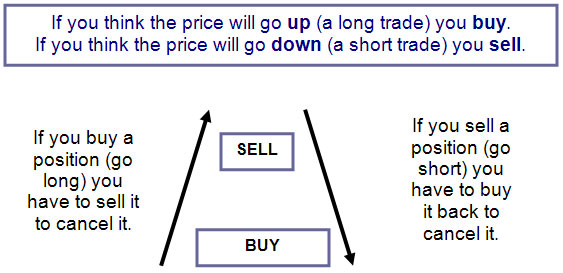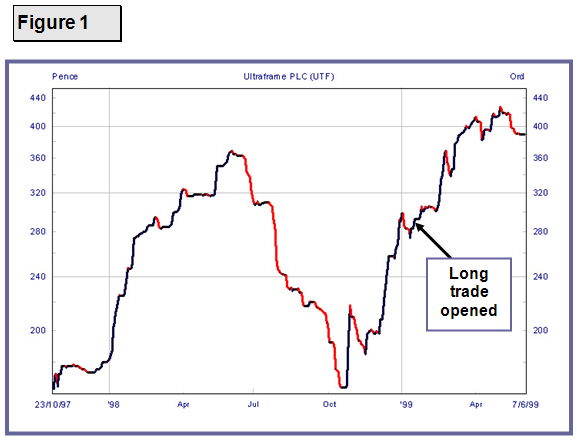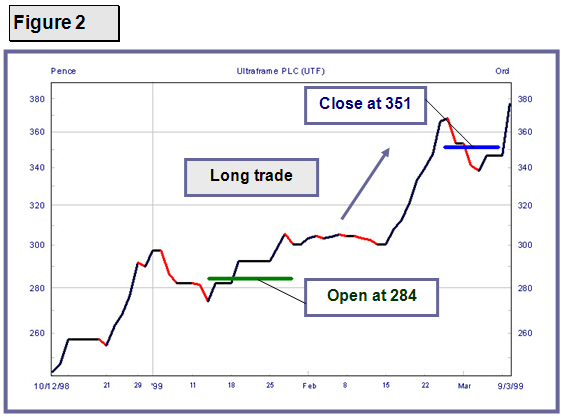The world of financial trading loves nothing more than a bit of jargon and 'going long' simply refers to the practice of opening a position on the market with the expectation of the price rising in value. This may sound like an obvious desire but in some types of trading, such as financial spread betting, it is possible to open a position and profit from a drop in price. This is known as short selling or shorting.
However, more traders still opt to go long, also known as 'buying', because many people believe this is easier to predict than a short position. Going long is more suitable for medium or longer-term bets, both of which are not always an option for those going short. However, as a general rule, spread betting is not ideal for the truly long-term investor because of the way finance costs increase. It is financially viable to hold a position for several weeks should you wish to do so, but any longer starts to make less economic sense.
The long market also tends to be less volatile than going short, making the chances of losing money far less. In theory, whilst both going long and short involve a significant element of risk, going long means that you know what the total maximum loss could be. A stock cannot drop below zero value whereas it has no upper limit, meaning losses for a short bet could potentially be far, far heavier.
One of the advantages of spread betting is that it allows the trader to choose to bet either way, helping to identify profitable opportunities even in a bear market. However, regardless of how wobbly the economy looks or how depressed investors may be, there will always be some stocks rising. Some analysts argue that when the market is more subdued it is easier to predict which sectors are going to rise, because buyers are more concentrated rather than being split.
 |
I can almost hear you say that you understand buying something and selling it again but the concept of selling something first then buying it back is a strange one. I can understand that, but it really is just terminology, a way of expressing something that is actually straightforward. Things will become much clearer when we look at examples.
The price quoted for a share if you look it up is the Market mid-price. This is the mid-point between the upper (buy) price and the lower (sell) price in the market. In other words, the middle of the market spread. The spread trading company will have a slightly wider spread than this and it may not always reflect the exact position of the market price. Let's look at some examples.
Below in Figure 1 is a line chart for Ultraframe PLC showing the price movement from 23rd October 1997 to 7th June 1999.
As an example of a long trade, let's say that on the 18th January '99 (represented by the arrow) we decided that the price was going to continue to rise so we would enter a 'long' trade.
(Don't you wish you could trade with hindsight!).
 |
Let's now take a closer look at that part of the chart to see how the trade would have worked.
N.B. It is important to remember that when looking at UK share prices, they are always quoted in PENCE (US shares are quoted in Dollars). You will see in the chart above (left and right scales) numbers like 240 & 400. This represents 240p and 400p (£2.40 & £4.00). You need to get used to prices expressed in pence with each penny representing a 'point' - more of this later.
 |
Figure 2 shows a close up of the long trade on Ultraframe.
The market mid price at the open was 284 (£2.84). The price (spread) offered by the trading company at that time was:
281.0 to 289.5 (a spread of 8.5).
We always buy to go long at the higher price or buy price, so we buy at 289.5.
At the close the market mid price was 351 (£3.51). The spread offered by the trading company was:
348 - 356.5 (spread is still 8.5).
We always sell at the lower price or sell price to close a long trade, so we sell our position to close it at 348.
So our profit on Ultraframe is 348 minus 289.5, which is 58.5 pence, usually referred to as points, one point being a penny.
How our 58.5 points profit tuns into hard cash we will look at in a moment.
In the next page we will now look at an example where you think the price will fall. Here you will go 'short'.
It is true that if you are going long you could also consider share ownership rather than spread betting. However, the latter has some advantages. Without the burden of actually purchasing the shares there are no fees or commission payable. The only cost is the spread and there is also far less red tape or rules.
Spread betting is governed by the Financial Conduct Authority rather than the Gambling Commission but despite this, any profits are not subject to either stamp duty or Capital Gains Tax. The majority of investors can also enjoy any gains free of income tax too. These concessions provide spread betting with a significant advantage over other investments.
Most professional traders recommend diversity in a portfolio and having all spread bets go long might not be the best tactic. Having a mix of both long and short positions means the risk is far more evenly spread. Providing you have done your homework when picking your subjects and with a healthy dose of luck, the potential for profits makes spread betting an option worth considering for every investor.
The content of this site is copyright 2016 Financial Spread Betting Ltd. Please contact us if you wish to reproduce any of it.